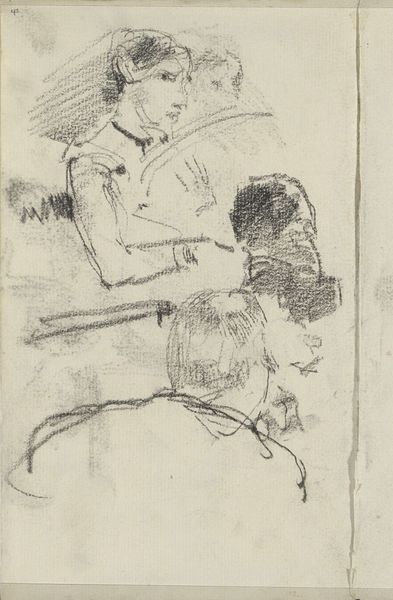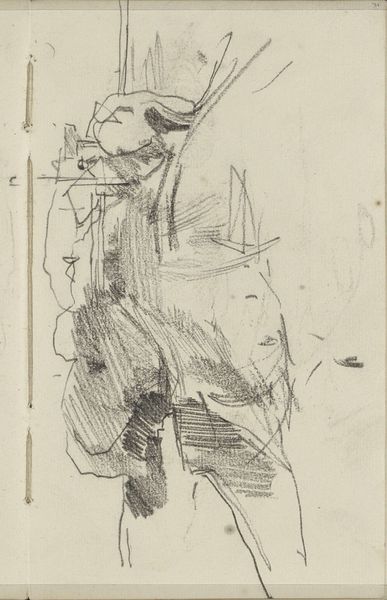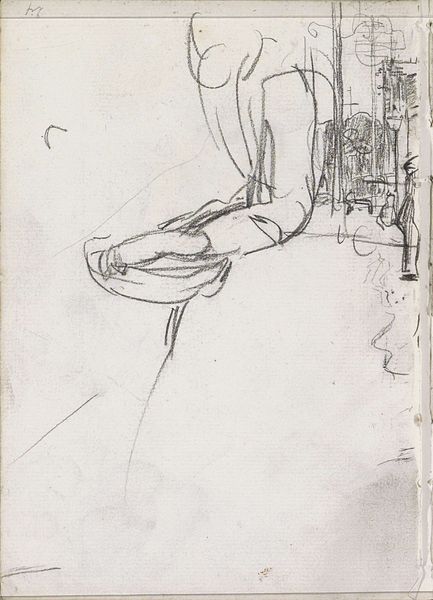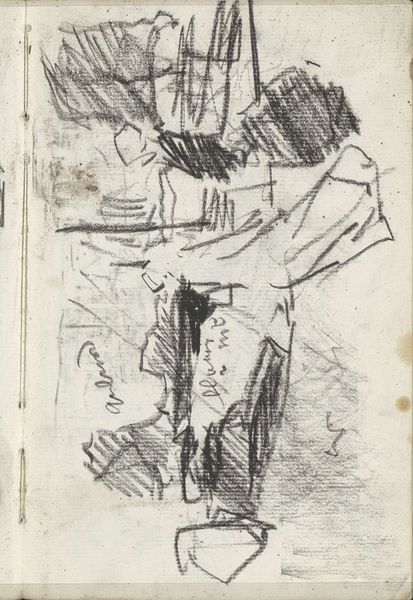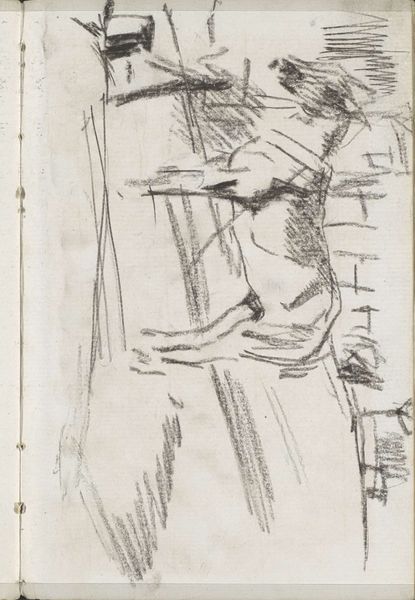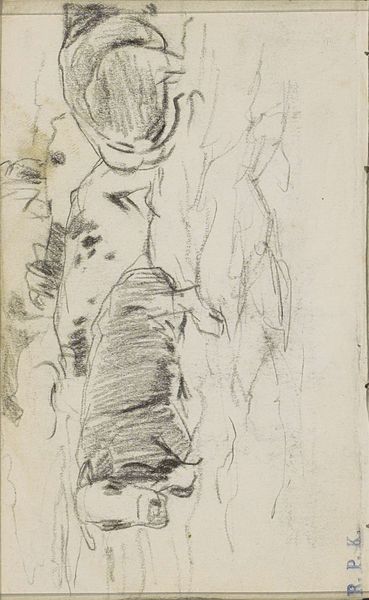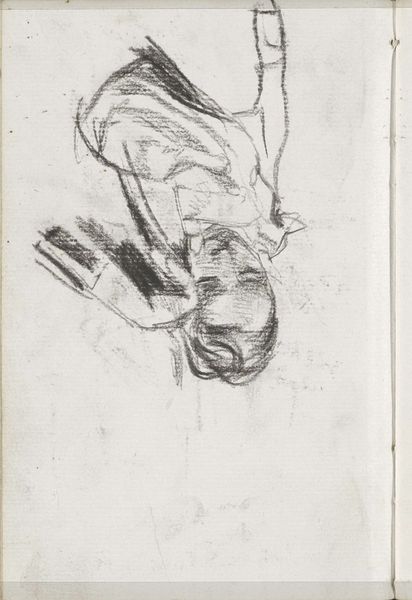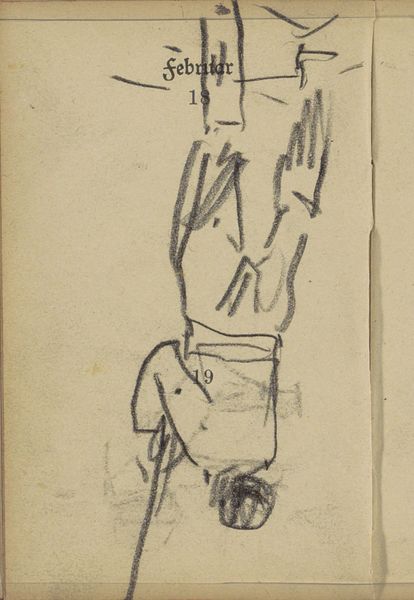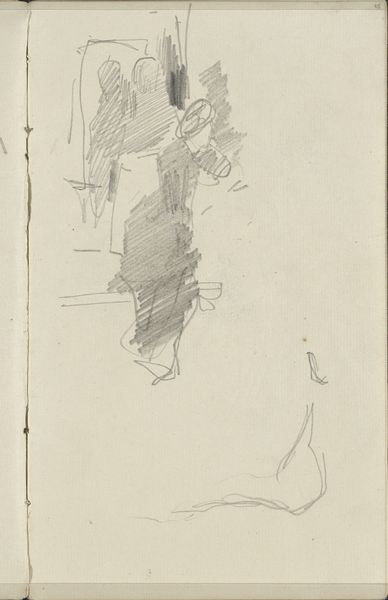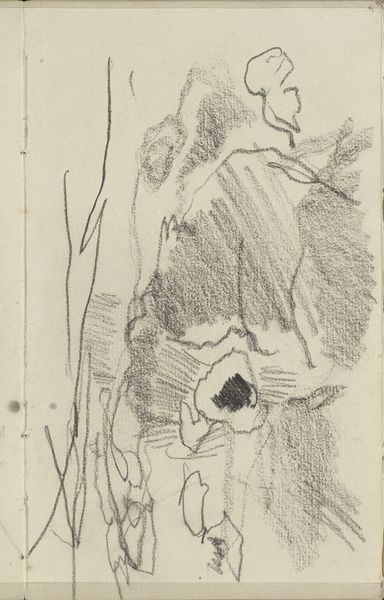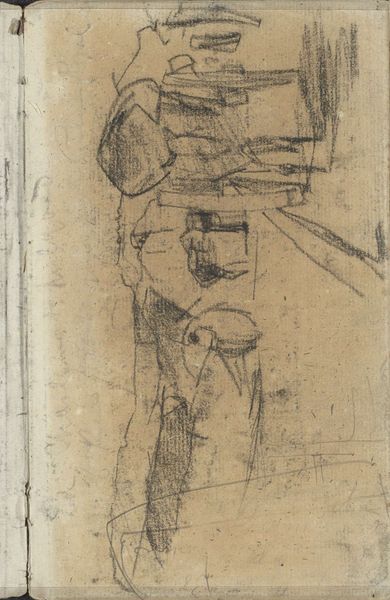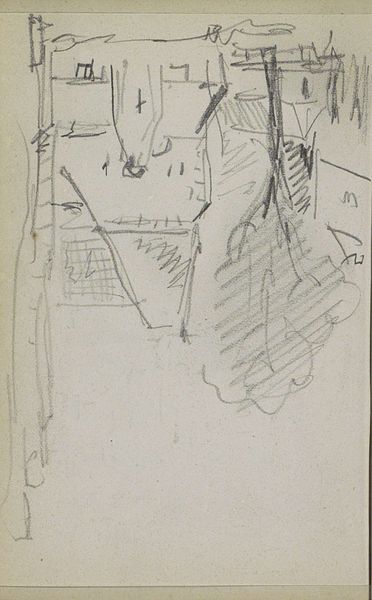
drawing, paper, pencil
#
drawing
#
light pencil work
#
dutch-golden-age
#
pencil sketch
#
landscape
#
figuration
#
paper
#
pencil
#
realism
Copyright: Rijks Museum: Open Domain
Editor: So this is "Houses on a Dike," a pencil drawing on paper by Johan Hendrik Weissenbruch, dated sometime between 1834 and 1903. It's really quite simple, almost like a fleeting impression. What can you tell me about it? Curator: It is interesting how you describe this as a fleeting impression. Consider Weissenbruch's place in the Hague School movement, a 19th-century group that aimed to depict Dutch landscapes with a sense of realism. Do you think this drawing reflects a conscious decision to move away from earlier traditions of grand, idealized landscapes? Editor: That's interesting. It definitely feels less formal than a lot of traditional landscapes. Maybe he was trying to capture something more authentic? Curator: Precisely. The "authenticity" you mention reflects a larger cultural shift toward valuing the everyday experiences of common people. In what ways might Weissenbruch be playing into, or even shaping, those socio-political values? Editor: I guess the choice of subject matter is pretty ordinary – just houses on a dike, nothing particularly special. And the medium itself, pencil on paper, feels very accessible. Curator: It’s fascinating how a simple drawing like this can be so indicative of larger societal trends. We often see these drawings displayed in frames, within the pristine walls of the museum. Can you envision where a sketch like this might have lived outside the institution, during Weissenbruch's time? Editor: Maybe in a sketchbook, as part of a preparatory process? Or perhaps it was simply intended to be appreciated in an intimate setting. Curator: Exactly. And considering who would have access to see or own such work helps us to grasp its social positioning and the broader cultural values it embodies. I wonder how this kind of representation impacted the canon of Dutch art in later periods? Editor: I hadn’t really thought about how much context can be packed into a seemingly simple sketch. It’s definitely changed my perception of how I'll view works on paper going forward. Curator: It’s been rewarding to see you consider those questions of viewership and public presentation, because ultimately those help to frame the artwork and, I would say, construct its art historical meaning.
Comments
No comments
Be the first to comment and join the conversation on the ultimate creative platform.
